Choosing the right plush for teddy bears can make the difference between a cuddly creation that you’ll cherish forever and a project that just doesn’t hit the mark. As a beginner, the options might feel overwhelming—after all, the plush fabric you pick will define the texture, durability, and overall look of your teddy bear. But don’t worry! With a bit of guidance, you’ll be well on your way to selecting the perfect plush fabric to bring your teddy bear to life.
Understanding Plush Fabric: A Beginner’s Overview
Before diving into the selection process, it’s essential to understand what plush fabric is. Plush, by definition, refers to a soft, luxurious fabric with a slightly longer pile. This is what gives the fabric its distinctive, velvety feel. Plush is the go-to choice for many teddy bear makers because it offers both a soft touch and an appealing look that mimics the fur of real animals.
Types of Plush Fabric
When it comes to making teddy bears, not all plush fabrics are the same. Here’s a quick overview of popular types:
- Minky: Known for its ultra-soft texture and vibrant colors, minky is a favorite among crafters. It’s perfect for creating a plush, huggable teddy bear.
- Velour: This fabric is smooth with a slight stretch, making it easy to work with. Velour is ideal for creating a classic, sleek teddy bear.
- Faux Fur: If you’re aiming for a more realistic look, faux fur is the way to go. It adds texture and gives your bear a more traditional teddy bear appearance.
- Microfiber Plush: This type of plush is durable and easy to care for, making it a practical choice for bears meant to be frequently handled or played with.
- Fleece: While not traditionally a plush fabric, fleece is soft and easy to work with. It’s a great choice for teddy bears intended for young children.
- Plush Knit: A knit fabric with a plush finish, this material is very soft and tactile. The plush knit is often used for creating small, detailed toys.
- Long-Pile Plush: This fabric features a long, fluffy pile, giving teddy bears a more realistic and voluminous look. It’s perfect for creating bears with rich texture.
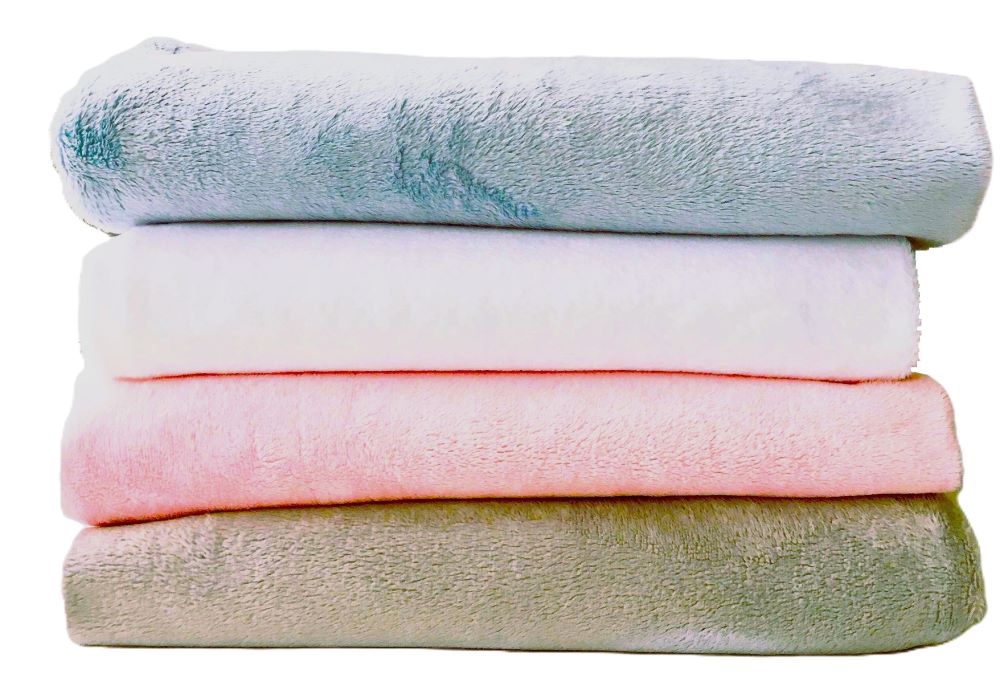
Factors to Consider When Choosing Plush for Teddy Bears
Now that you’re familiar with the different types of plush, let’s talk about the factors that should guide your choice.
Texture and Softness
The first thing most people notice about a teddy bear is how it feels. Softness is key, especially if your bear is intended for a child. When shopping for plush, don’t be afraid to run your fingers over the fabric—feel its texture and imagine how it would translate into a finished teddy bear.
Durability and Quality
Not all plush fabrics are built to last. A high-quality plush will be tightly woven and resistant to shedding. Durability is especially important if your teddy bear is meant to be a child’s constant companion. Look for plush fabrics with a solid backing and check the pile to ensure it doesn’t easily come loose.
Ease of Sewing
Some plush fabrics are easier to sew than others. For beginners, it’s best to start with a plush that doesn’t stretch too much and isn’t too thick. Velour and minky are good choices because they offer a balance of softness and manageability. Faux fur, while beautiful, can be trickier to work with due to its long pile. If you do opt for faux fur, be sure to use sharp scissors and pins to keep the fabric in place as you sew.
Color and Aesthetics
Your choice of color will significantly impact the final look of your teddy bear. Neutral tones like brown, beige, and grey are classic choices, but don’t be afraid to experiment with vibrant colors, especially if you’re creating a bear for a child. Patterns and prints are also available in plush fabrics—consider using them to add a unique twist to your design.
Budget Considerations
While it might be tempting to splurge on the most luxurious plush fabric you find, it’s essential to balance cost with quality. Fortunately, you can find high-quality plush fabrics at various price points. If you’re working within a budget, consider buying in bulk or looking for sales at online retailers. Some stores often offer discounts on plush fabrics, which can be a great way to get more value for your money.
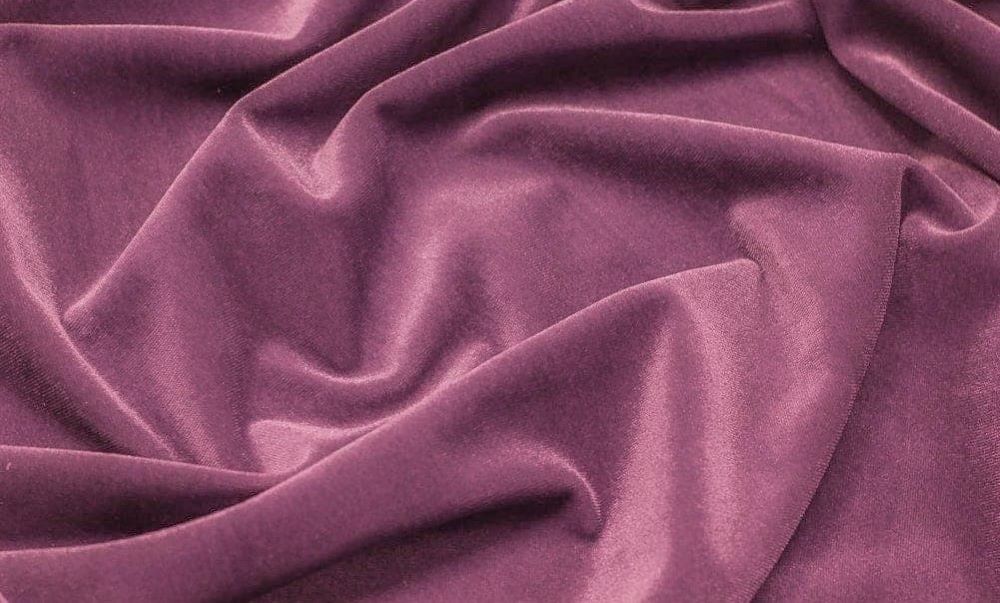
Tips and Tricks for Working with Plush Fabric
Once you’ve chosen your plush fabric, there are a few things to keep in mind to ensure your sewing experience is smooth and your teddy bear turns out just right.
Pre-Washing and Preparing Your Fabric
Some plush fabrics may shrink slightly after washing, which can affect the final size of your teddy bear. To avoid this, it’s generally recommended to pre-wash the fabric.
However, suppose you’re working with designer bears meant for display or as collectibles, rather than toys for children. In that case, it’s common practice not to pre-wash the fabric to preserve its original texture and quality.
If the fabric has a high pile, such as faux fur, you may also want to skip this step to prevent the matting or tangling of the fibers.
Cutting Plush Fabric
When cutting plush, always cut from the back side to prevent the pile from getting caught in the scissors. Using a sharp pair of scissors is crucial for clean edges. If you’re working with faux fur, cut just the backing, not the fur itself, to maintain a natural look along the seams.
Sewing Techniques for Plush Fabric
Plush can be a bit slippery, so it’s important to securely pin the fabric before sewing. A walking foot on your sewing machine will help the fabric move smoothly. Use a longer stitch length to avoid puckering, and be sure to test your stitches on a scrap piece of fabric to ensure they look right.
If you prefer hand-sewing, use a strong needle and thick thread, and opt for backstitching to create durable seams. Hand-sewing gives you greater control, especially when working with small details or intricate areas, making it a great option for finishing touches on your teddy bear.
Finishing Touches
After sewing your teddy bear, you’ll want to stuff it carefully to maintain its shape. When closing the seams, use a ladder stitch for an invisible finish. To keep the plush soft and fluffy, avoid overstuffing and fluff the bear gently once it’s closed up.
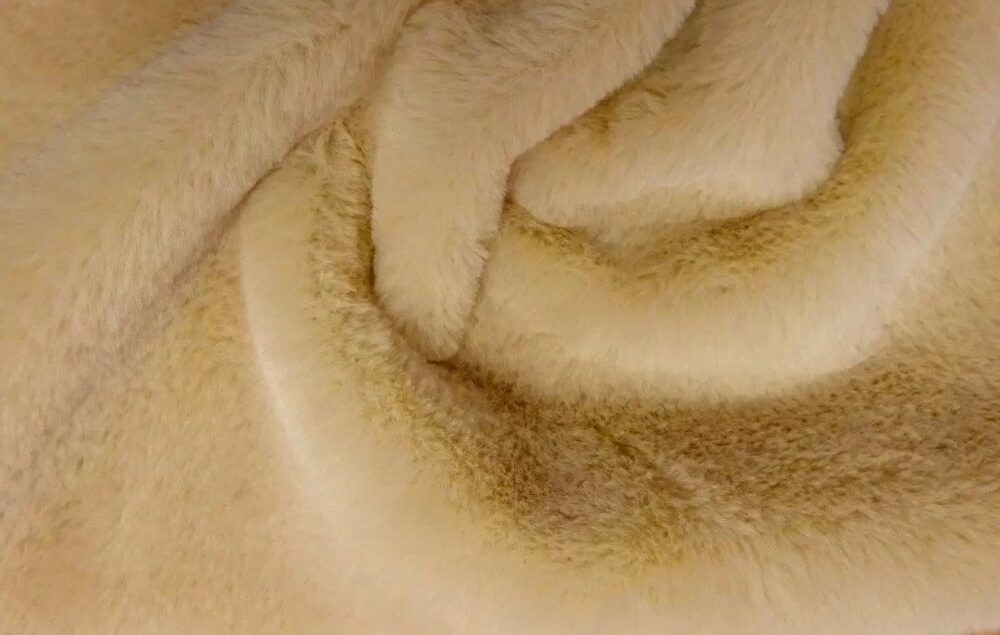
Common Mistakes to Avoid
Even with the best intentions, mistakes can happen. Here are a few common pitfalls to watch out for:
Overlooking Fabric Stretch
Some plush fabrics, like velour, have a slight stretch. If not handled carefully, this can distort the shape of your teddy bear. Be sure to cut and sew with the stretch in mind, pinning carefully to keep everything aligned.
Not Testing Fabric Samples
Before committing to a large piece of plush fabric, it’s wise to test a small sample. This will help you understand how the fabric behaves when cut, sewn, and washed, ensuring there are no surprises later on.
Ignoring Washing Instructions
Each plush fabric has specific care instructions. Ignoring these can lead to shrinking, matting, or loss of softness. Always follow the recommended washing guidelines to keep your teddy bear looking and feeling its best.
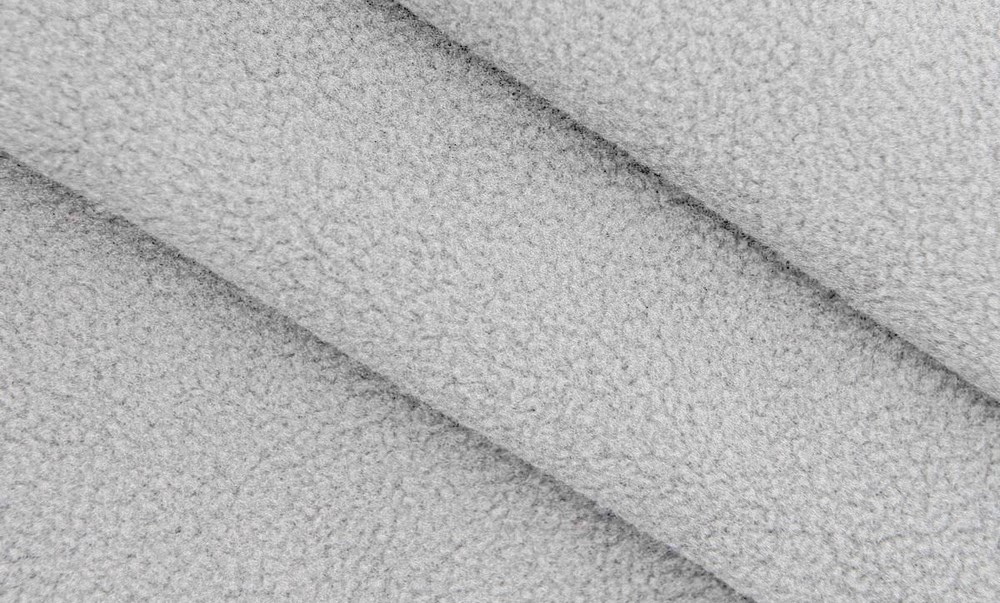
Where to Buy Plush Fabric for Teddy Bears
Finding the perfect plush fabric is easier than ever with so many online and local options available.
Local Fabric Stores
If you prefer to see and feel the fabric before buying, visiting a local fabric store is your best bet. Many stores carry a variety of plush fabrics, and the staff can often provide helpful advice on choosing the right one for your project.
Checking for Sales and Discounts
Plush fabrics can be expensive, so keeping an eye out for sales is a smart move. Sign up for newsletters from your favorite fabric retailers to stay informed about upcoming discounts and promotions.
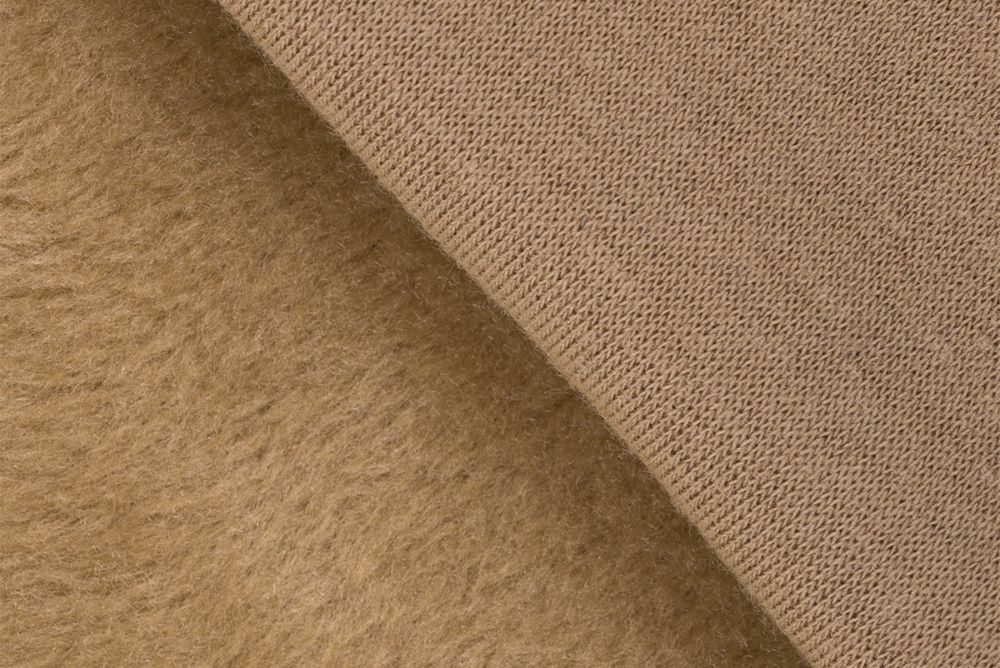
Conclusion
Choosing the perfect plush for your teddy bear is a blend of art and science. By considering factors like texture, durability, and ease of sewing, you’ll be able to pick a fabric that not only suits your design but also stands the test of time. Don’t forget to experiment, test fabric samples, and enjoy the creative process—each teddy bear you make will be a unique reflection of your craftsmanship.
More Goodies
Eager to explore more about crafting teddy bears? These handpicked resources will take your skills to the next level and offer valuable insights:
- Exploring Different Types of Teddy Bear Fur Fabric: A Comprehensive Guide
Unearth the secrets of various teddy bear fur fabrics with this in-depth guide. Whether you’re drawn to the plush softness of minky or the luxurious feel of faux fur, this article helps you navigate the world of textures to find the perfect fit for your creation. - Understanding the Difference Between Handmade Stuffed and Plush Toys for Kids and Collectible Teddy Bears
Dive into the nuances between toys crafted for play and those designed as collectible treasures. This piece breaks down the different approaches and considerations, helping you tailor your teddy bear to its intended purpose, whether it’s a cherished keepsake or a beloved plaything. - Teddy Bear Tutorial for Beginners: How to Start
Just starting out in teddy bear making? This beginner’s guide provides a clear roadmap from selecting materials to mastering basic sewing techniques. It’s your go-to resource for turning your teddy bear dreams into reality with step-by-step instructions designed to build your confidence and skills.
Join Us for Exclusive Content and Updates!
Are you seeking more inspiration, free patterns, tutorials, and tips for crafting adorable teddy bears? Join our Facebook page for exclusive updates, and don’t forget to subscribe through the Spotlight form towards the beginning of the article—this is your chance to access exclusive content and win teddy bear crafting supplies!
Let’s create together and share the joy of teddy bear art!

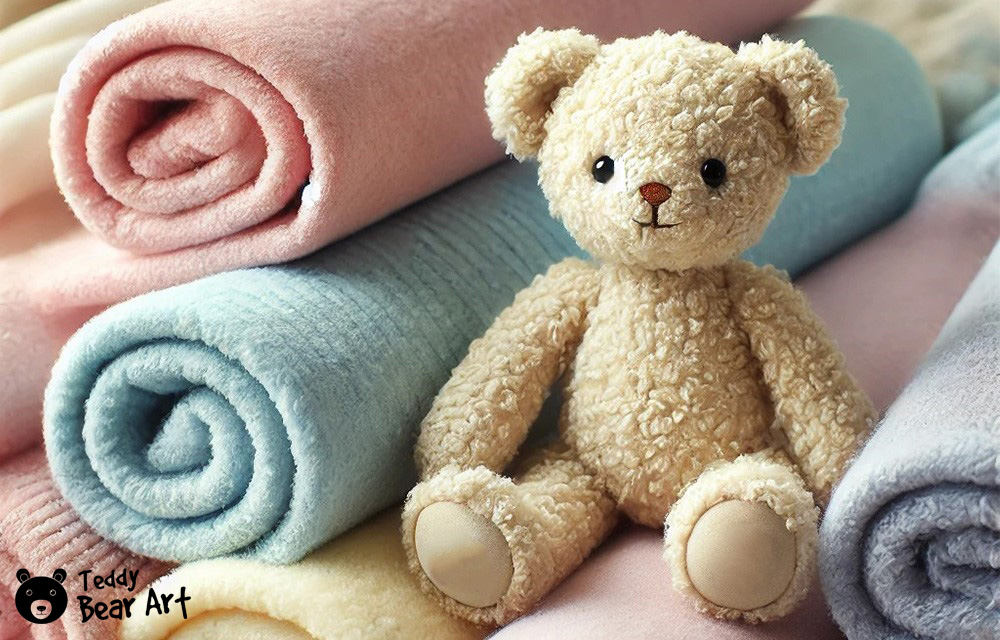
Thank you for such a comprehensive and insightful guide on choosing the perfect plush for teddy bears. Your article provides a well-rounded overview, especially for beginners who might feel overwhelmed by the many fabric options available. The detailed breakdown of different plush types and the tips for working with each one is incredibly helpful. It’s clear that you understand the balance between the art and practicality of teddy bear making.
Your emphasis on considering texture, durability, and ease of sewing will surely help many crafters make informed choices that lead to beautiful, lasting creations. The advice on avoiding common pitfalls and the importance of testing fabric samples is particularly valuable for avoiding frustration during the crafting process.
I also appreciate the additional resources you provided, which offer further insights into the world of teddy bear making. It’s great to see such a supportive community being fostered, and your article will undoubtedly inspire many to dive into this rewarding hobby.
Thank you so much for your kind words! I’m thrilled to hear that you found the guide helpful and that it addresses the needs of both beginners and experienced crafters. It’s always a joy to share insights and tips that can make the teddy bear-making process smoother and more enjoyable. I’m glad you found the advice on fabric types and testing samples useful—it’s all about making the crafting experience as rewarding as possible. Your feedback is incredibly encouraging and reinforces the supportive community we’re building together. Happy crafting, and I hope your teddy bear creations turn out beautifully!
I really enjoyed reading this article! As someone who’s just starting out in crafting, I found your breakdown of plush fabric types incredibly helpful. It’s easy to see how each type could give a different feel to a teddy bear, and I love how you made it less overwhelming for beginners like me.
The tips on texture, durability, and even sewing techniques were spot on. I especially liked the advice on using velour and minky for ease of sewing while still achieving that soft, plush feel. I’ll definitely keep that in mind when I dive into my first teddy bear project! Thanks for the great guide This will definitely be bookmarked for future reference!
Thank you so much for your lovely comment! I’m really glad that you found the article helpful, especially as you’re just starting out with crafting! It can definitely be tricky to understand all the different fabric types, so I’m happy the tips on texture, durability, and sewing techniques resonated with you. Minky is such a great choice for beginners, and I can’t wait to see how your first teddy bear project turns out! Feel free to reach out if you have any questions. Best of luck with your teddy bear, and may your creativity bring you joy! 🧸✨
Haven’t had a chance to read all you offer in articles. This so far seems like a very good and informative site. Looking forward to making my first
Thank you so much! I’m glad you like the site. Wishing you the best of luck with your first teddy bear! If you have any questions, feel free to ask. ?